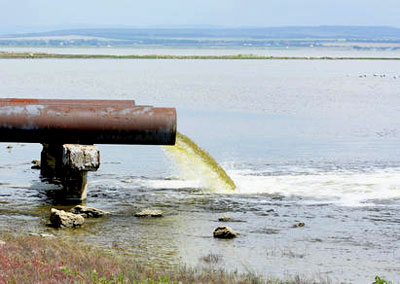|
October 6, 2011 from ScienceDaily Website
Though viruses are the most abundant life form on Earth, our knowledge of the viral universe is limited to a tiny fraction of the viruses that likely exist.
In a paper published in the
online
journal mBio, researchers from the University of Pittsburgh,
Washington University in St. Louis, and the University of Barcelona
found that raw sewage is home to thousands of novel, undiscovered
viruses, some of which could relate to human health.
Raw sewage is home to thousands of novel, undiscovered viruses, some of which could relate to human health, researchers report in a new paper.
(Credit: © Dmitry
Vereshchagin / Fotolia) There are roughly 1.8 million species of organisms on our planet, and each one is host to untold numbers of unique viruses, but only about 3,000 have been identified to date.
To explore this diversity and to better
characterize the unknown viruses, Professor James Pipas,
Distinguished Professor of Biological Sciences Roger Hendrix, and
Assistant Professor Michael Grabe, all of the Department of
Biological Sciences in Pitt's Kenneth P. Dietrich School of Arts and
Sciences, are developing new techniques to look for novel viruses in
unique places around the world.
This makes raw sewage home to the most diverse array of viruses yet found.
The viruses that were already known included human pathogens like Human papillomavirus and norovirus, which causes diarrhea.
Also present were several viruses
belonging to those familiar denizens of sewers everywhere: rodents
and cockroaches. Bacteria are also present in sewage, so it was not
surprising that the viruses that prey on bacteria dominated the
known genetic signatures. Finally, a large number of the known
viruses found in raw sewage came from plants, probably owing to the
fact that humans eat plants, and plant viruses outnumber other types
of viruses in human stool.
Other studies have focused on bacteria,
or certain types of viruses. The researchers also developed new
computational tools to analyze this data. This approach, called
metagenomics, had been done before, but not with raw sewage.
The team's hypothesis is that new viruses emerge, in large part, through gene exchange.
But before research on gene exchange can begin in earnest, large numbers of viruses must be studied, the researchers say.
|

